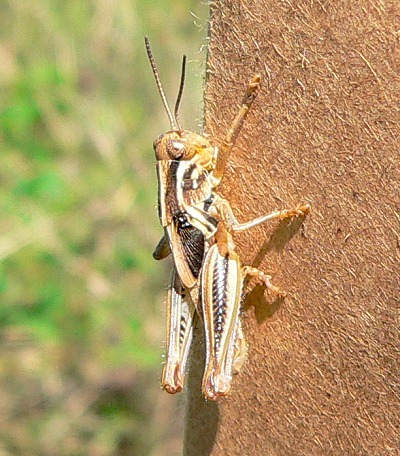I finally decided that Buffalo Ridge Prairie had to be mowed this week – when I went up to look at it the Canadian Horseweed (Conyza canadensis) had completely taken over. It’s an annual, and I was afraid all those seeds would really cause problems next year, and that their thick stalks would shade out the prairie plants. It was sad to mow all the flowering prairie plants.
Here’s the scene while Mike was mowing.
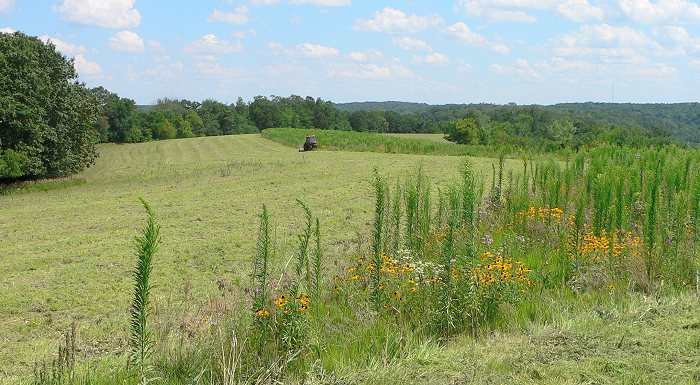
Dozens of swallows swirled around the mowing area, catching all the insects that flew up. I saw both Barn Swallows and Tree Swallows, but there may have been others too – they were flying too fast for me to get a good look.
We’ve been seeing a lot of deer – plenty of fawns and some bucks with big antlers. Here’s one of the bucks on Western Field.
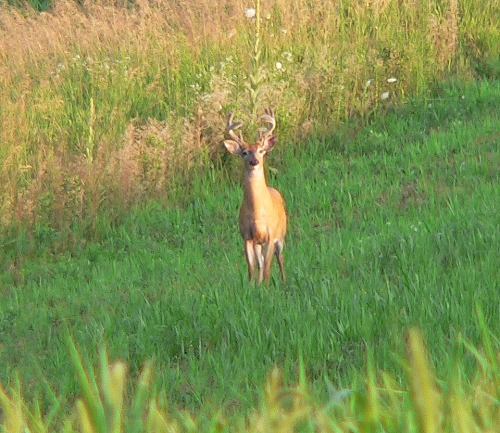
Mike’s other project was taking out the beaver’s dam. It’s a good project for a hot afternoon. We like having the beavers around, but we don’t like the dam to make a pond right under our driveway. Here’s Mike heading into the creek.
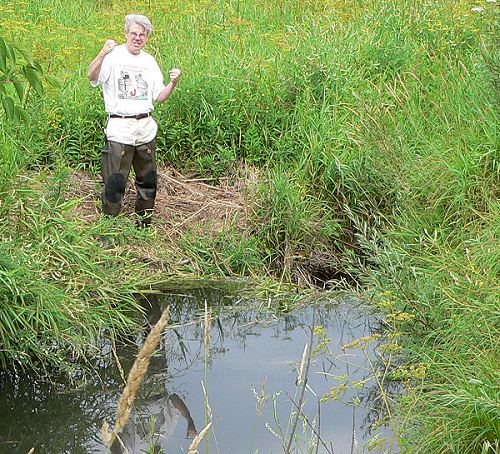
And here he is pulling out the dam.

I visited our friend Rob’s prairie, and saw some great insects. The best was being able to photograph the top of an Eastern Tailed Blue butterfly. They almost always rest with their wings together – usually the only hint of the color of the tops of their wings is the flash of blue (males) or dark gray (females) when they flutter around my feet. This one is a female, and she sat still in the sun with her wings wide open, for about a minute. I never realized before that the gray color is slightly iridescent in the sun.
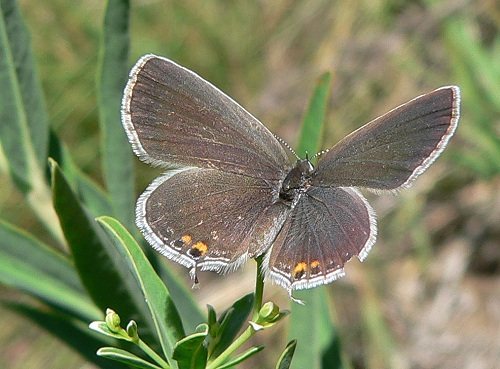
I also saw an odd moth – I think it’s a Pyralid Moth.
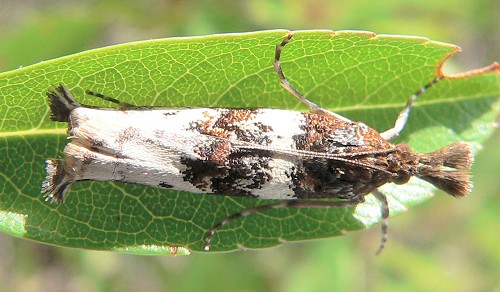
And a Tiger Beetle – I think a Punctured Tiger Beetle (Cincindela punctulata punctulata) – a fairly common one in Wisconsin.
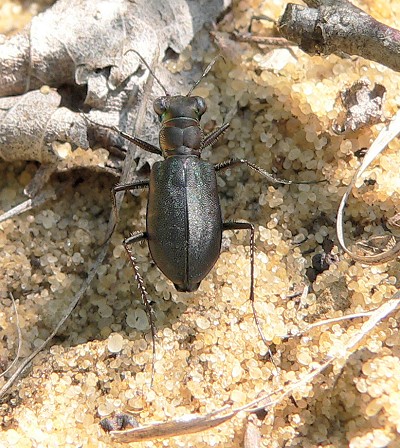
The best butterfly I saw this week was a Variegated Fritillary in the Narrows Prairie. It’s not very common, and I’ve only seen one at the farm once before.

Here you can see the underside of its wings.

This is a Duskywing – a kind of skipper (butterfly). It was getting ready to ride out a storm, so it was finding a place to hang upside down under a plant stalk. I had to lie on the ground under the plant and use the flash to be able to see the butterfly against the sky. Mike says that seeing people take photographs of butterflies is much more fun than seeing the butterflies.
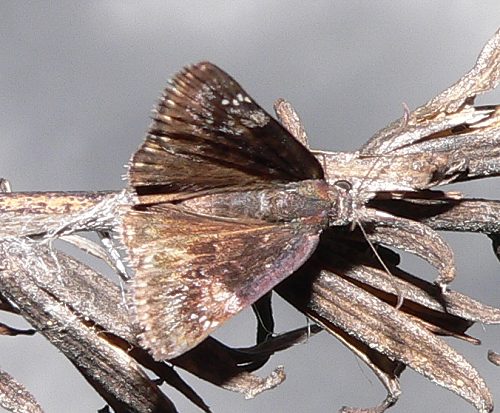
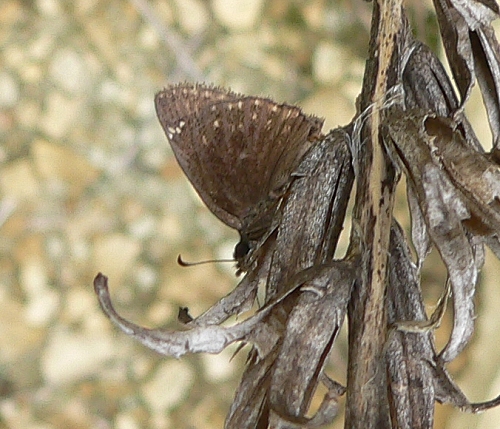
Mike Reese confirms that it’s either a Wild Indigo Duskywing (Erynnis baptisiae) or a Columbine Duskywing (Erynnis lucilius). The Wild Indigo Duskywing is much more common in Wisconsin because it now also lays it’s eggs on Crown Vetch, which has been planted along many roadsides. The only way to tell the two butterflies apart without dissecting them is to figure out their food plant. This one was on the rocky cliff behind the house where there’s lots of Wild Indigo, so I suspect that’s what it is. I’ll check next week for caterpillars on the Wild Indigo plants.
I collected two kinds of grass seeds – Prairie Brome and Slender Wheatgrass – both from our prairies. Here’s a large cocoon woven into the seeds of a stalk of Prairie Brome.
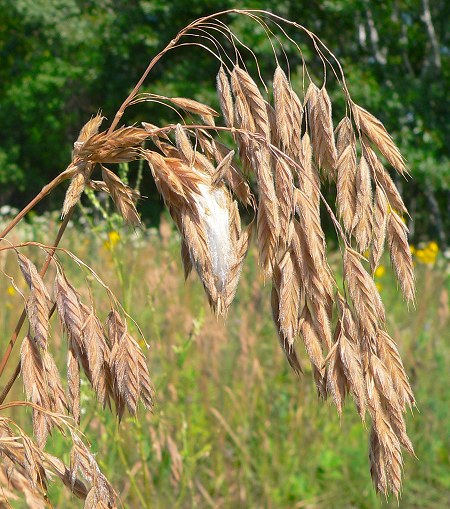
There are caterpillars on many of the Sunflowers – Oxeye, Silphium, and Helianthus species. The leaves turn black and shrivel up, and if you look under the leaves you find lots of tiny caterpillars. They are “gregarious” at this stage – they like to be together and when they’re startled they all move in unison. Here are some on an Oxeye leaf. I’m not sure what kind of caterpillar they are – my guess is Silvery Checkerspots.
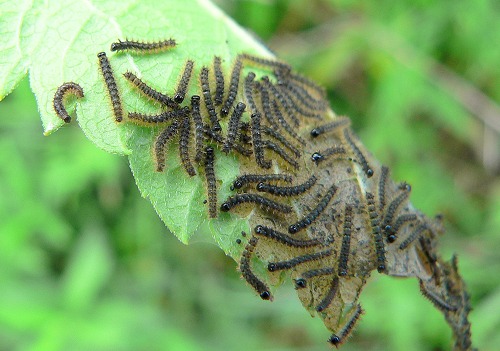
3 Finger Valley is gorgeous this year – more flowers are blooming and the weeds aren’t as obvious. Here are two views of the narrow part of the valley.
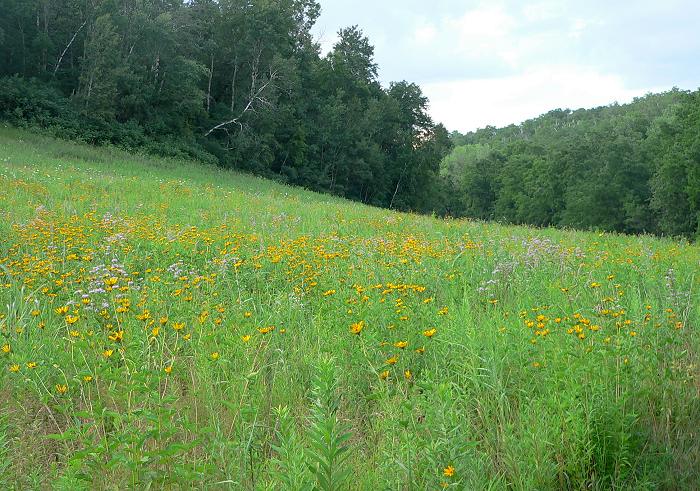
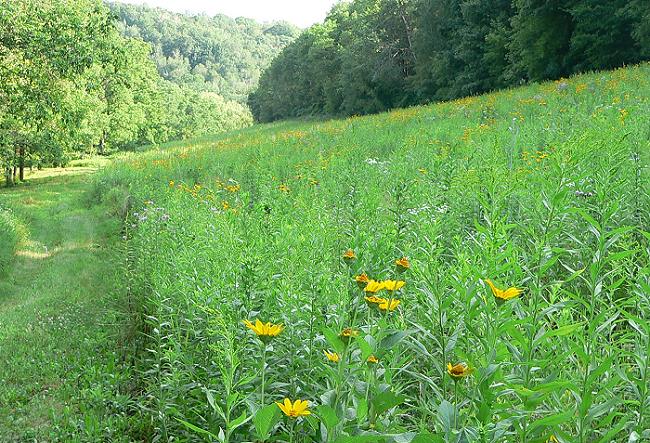
And this is the wider part where the three fingers come together.
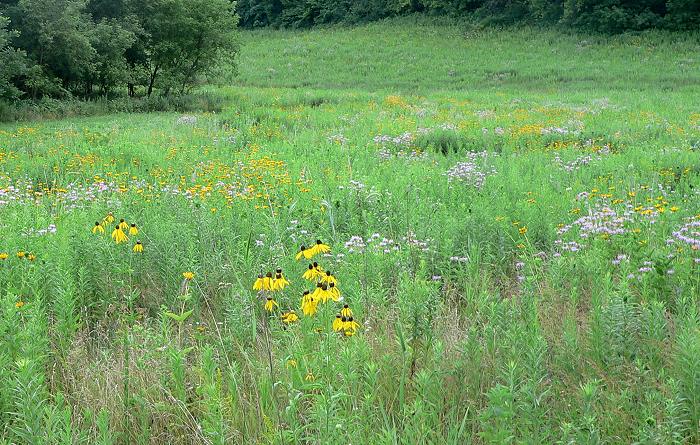
This is a patch of American Bellflower that grows in the woods next to 3 Finger Valley – I found it last year for the first time.
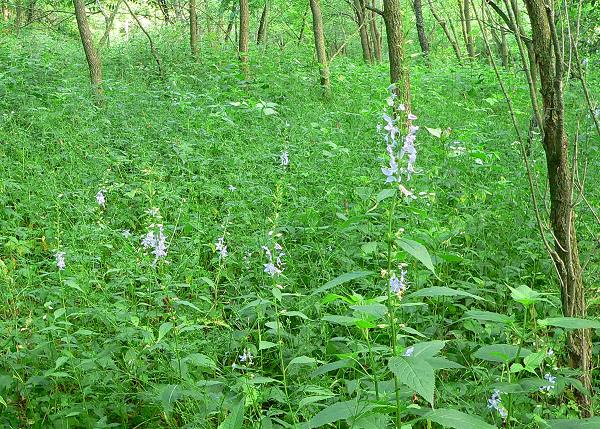
Here’s a close-up of the flowers.

This is a Leopard Frog that was hopping across the stones behind the house. It was a little surprising to see a frog in such a dry dusty place.
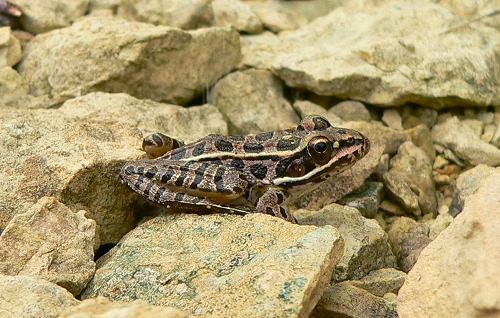
There are grasshoppers everywhere these days. I’d like to learn to identify the different kinds but that’s a project for sometime in the future. Here’s one of the small grasshoppers that are very common in our prairies – sitting on my seed collecting bag. It’s a short winged species, I think in the genus Melanoplus.
